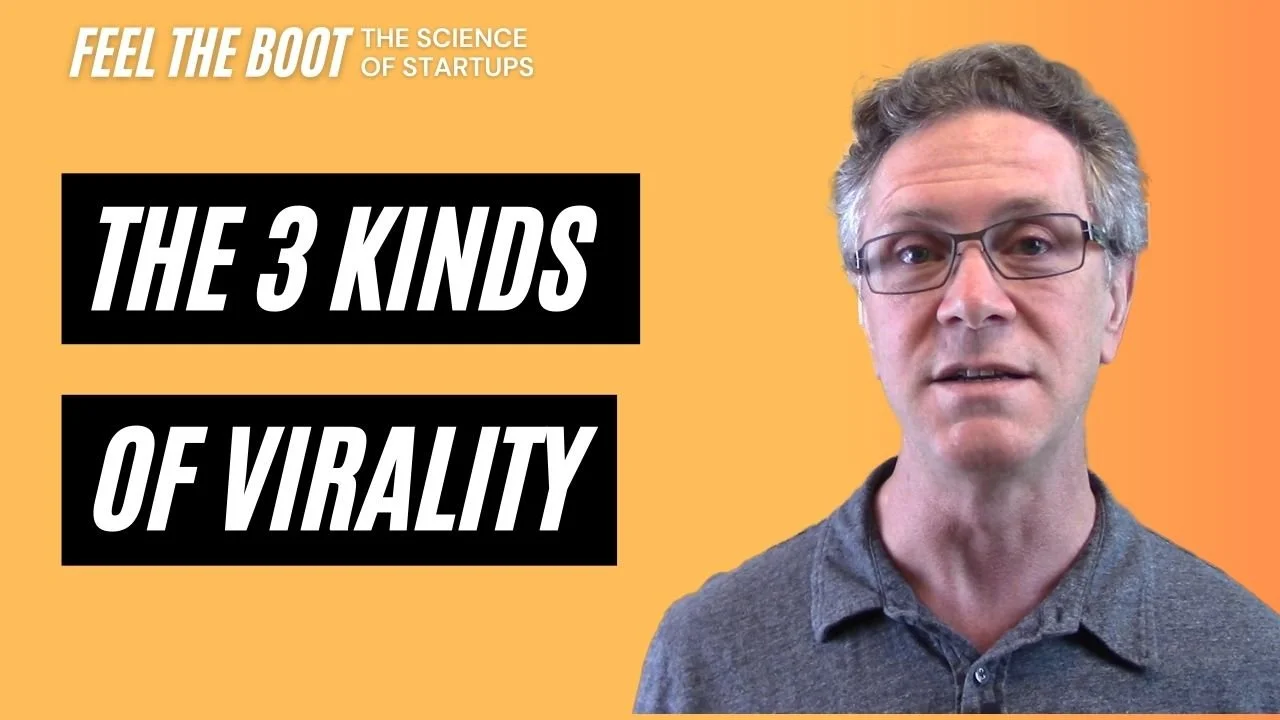13. The three kinds of viral growth and how to use them in your startup
People talk about things going viral all the time, usually in connection to some meme or video. Virality is the holy grail of business models. There are three different kinds of virality which might apply to your startup business.
This episode is part of our series on startup insights and on running your business.
The term viral growth comes from epidemiology. If each sick person infects more than one new person, the disease will rapidly grow and spread through a population. While we don’t want that with sickness, it is fantastic in business.
Viral user growth describes a situation where existing users bring in new users. The real magic happens if each user brings in more than one new user creating exponential growth.
3 Kinds of Virality
I think about three different kinds of virality: Incentivized, Advocacy, and Inherent.
Incentivized virality is where a business basically bribes its users to recruit their friends. Any time you get a free month of a service for each referral that signs up, you are participating in incentivized virality. The down side of this approach is that it can be off-putting to your customers. It can feel like you are trying to exploit your users at the expense of their friends. The cost of these incentives can also become very large, but it can be very effective in the early growth stages of a business.
Advocacy virality happens when your users want to tell all their friends about your business. They love your solution and want to let everyone in on this great thing they have discovered. You see this with Tesla owners all the time. We can be down right annoying with the amount we go on about these cars. Tesla does not need to give me anything to get me to endorse them at every opportunity.
Strong network effects characterize inherent virality. If a service give you more value when more people you know are using it, you have a strong incentive to get them on the service. The example economists always use is fax machines. If you are the only person you know with one, it is basically a big paper weight. Facebook is a more recent example. Its value is inextricably tied to having your friends on the platform too. Once you join a system like this, you will start pressuring people you know to join as well.
An interesting complication of inherently viral business model is the low value in the early stages. When your company is just starting, users will not find their friends already there, so they won’t get much out of the service. The key to achieving that critical user density is to focus on small closed populations. Within a small group you can quickly hit a high enough density to ensure that most new users will find many connections already signed up. Facebook did exactly this by launching exclusively to current college students and focusing rollout on a school by school basis. It was only after they had a very large user base in that population that they opened up membership to the general public around the world.
Virality Math
Two factors dominate the virality of your business: the number of invitations each user send (i), and the fraction of invited users who convert to active users (c). The virality coefficient (k) is simply the product of these two, k = i * c
With a virality coefficient less than one, the impact of each new user is limited. If k=0.5, on average each new user will lead to one additional user.
At k=1 there is sustained feedback. Each user brings one more, who brings one more, etc. An initial population of users would, theoretically, grow at a constant rate forever.
Once k is greater than 1, you have exponential growth. Each initial users brings an ever growing cascade of new users. At k=4 we see implausible numbers of users, quickly exceeding the actual population of this planet.
As an entrepreneur, you have two levers to control your virality. You can increase the number of invitations sent and improve the conversion rate from those invitations. The number of invitations can be improved through incentives or by making your solution more amazing. The conversion rate depends on the clarity of your communications and the easy of on-boarding for the user.
The Hard Truth
In all cases, the user’s experience of your solution is critical. People will not invite friends to use a service, even with significant incentives, if they think they will be resented for doing so. None of us wants to look bad by recommending a lousy product.
So, the good news is that all you have to do for high virality is to make an incredible product. The bad news is that you somehow need to make your product incredible.
I hear a lot of companies describe themselves as viral. However, I rarely hear them dig deeper and explain what kind of virality they have and how they will measure and maximize it. If you think virality will be an important component of your business, see if you can get some initial data and measurements early. Even surveys can provide some indicators of how effective this strategy might be. If you have real evidence that virality will work for your business, as an investor I am very interested in listening to you.
For more on virality you might want to check out this article from Forbes: How To Engineer Virality For Your Startup
Till next time, ciao!
Creating Virality is all about creating products that delight your customers. This article will help you optimize your efforts to make sure you are building the right thing.







